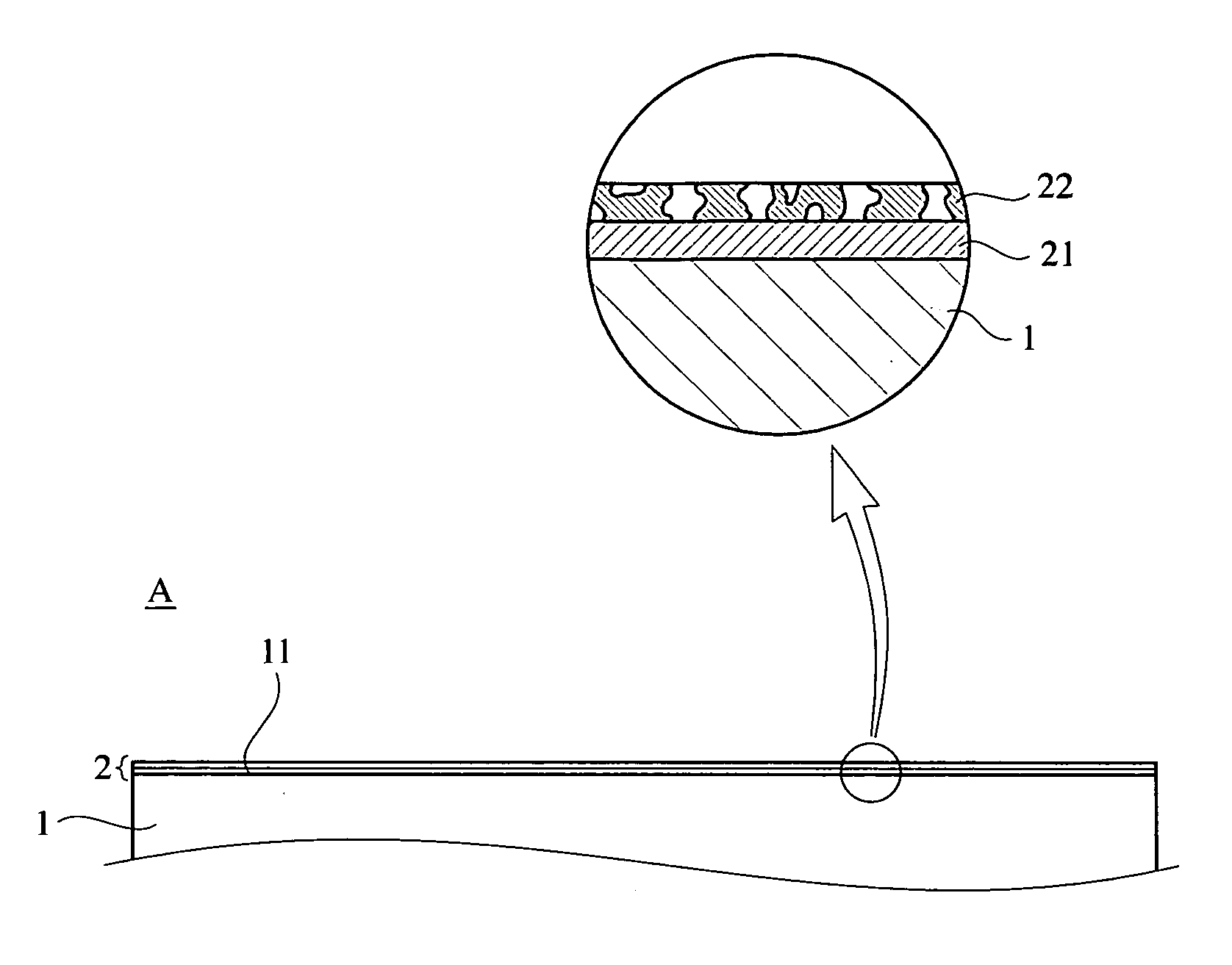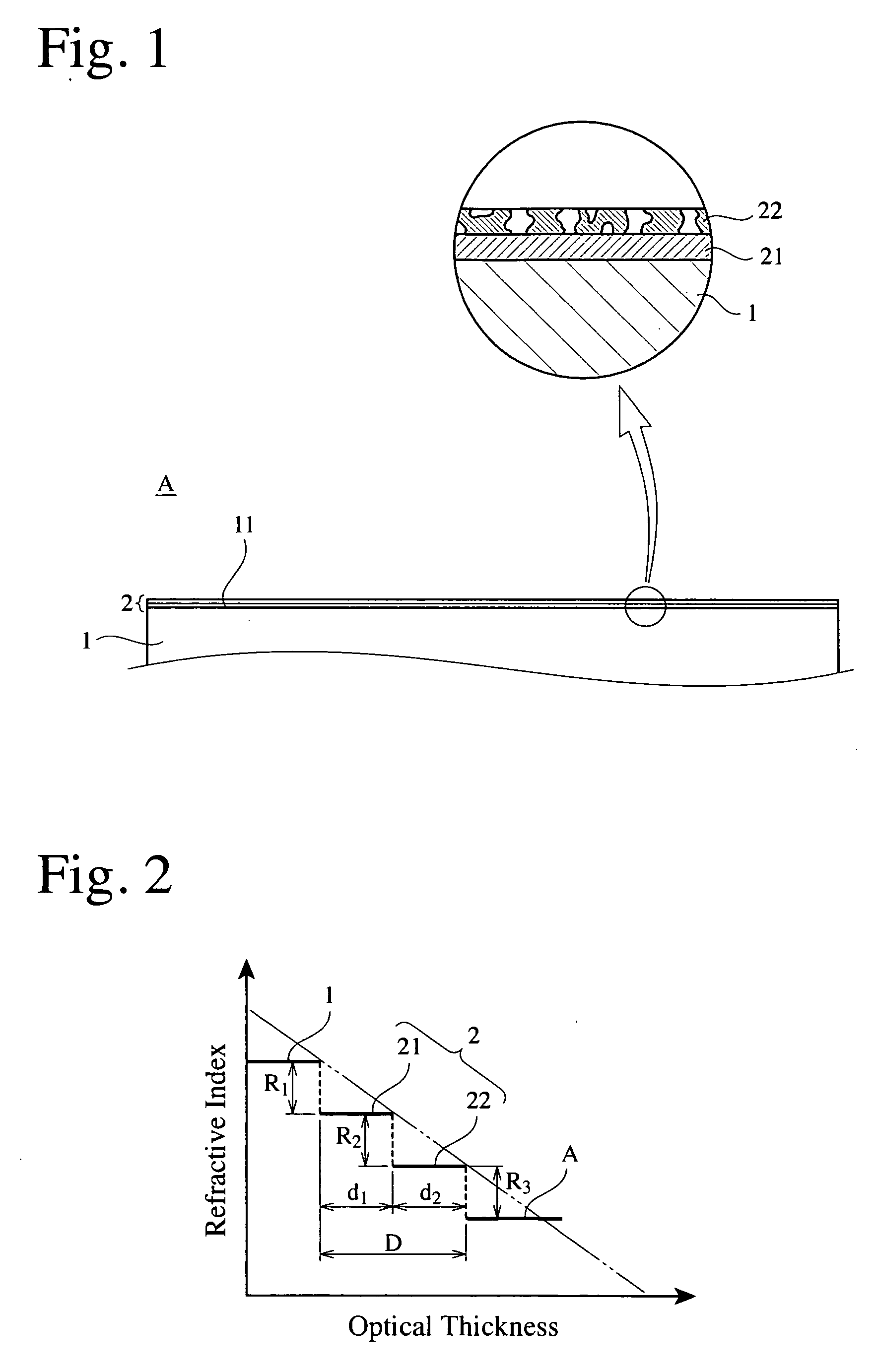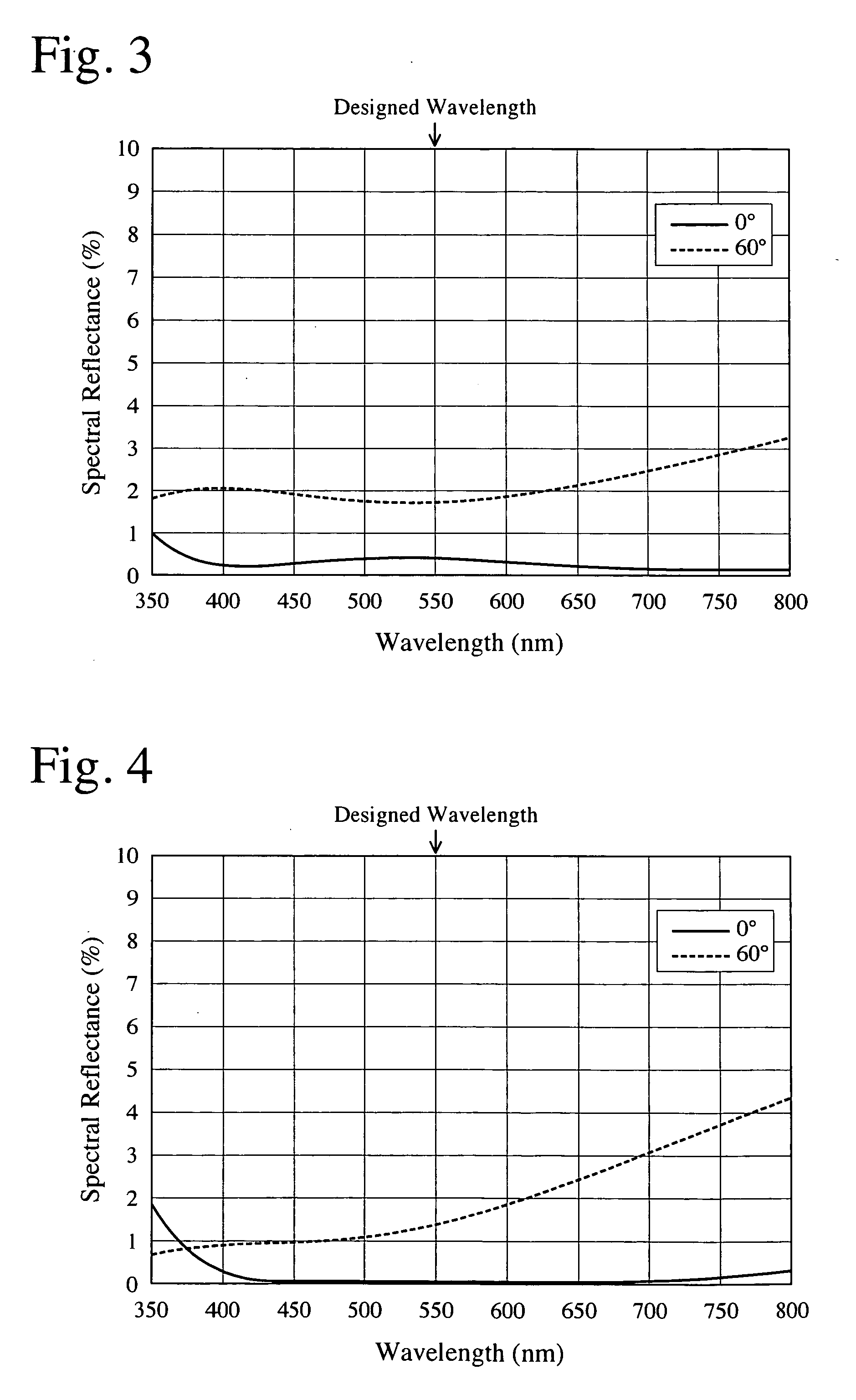Anti-reflection coating and optical element having such anti-reflection coating for image sensors
- Summary
- Abstract
- Description
- Claims
- Application Information
AI Technical Summary
Benefits of technology
Problems solved by technology
Method used
Image
Examples
example 1
[0077] An anti-reflection coating was formed on a flat BK7 glass plate by the steps (1) and (2) below. The designed wavelength λd was 550 nm.
(1) Formation of Dense Layer
[0078] Using an apparatus with an electron-beam vapor deposition source, a magnesium fluoride layer (refractive index: 1.38) having a physical thickness of 94 nm (optical thickness: 130 nm) was formed on a flat BK7 glass plate having a refractive index of 1.518 at a wavelength of 550 nm by a vapor deposition method.
[0079] (2) Formation of Porous Layer
(i) Preparation of Organic-Modified-Silica-Containing Sol
[0080] After 5.21 g of tetraethoxysilane was mixed with 4.38 g of ethanol, 0.4 g of hydrochloric acid (0.01 N) was added thereto, and the resultant mixture was stirred for 90 minutes. After 44.3 g of ethanol and 0.5 g of an aqueous ammonia solution (0.02 N) were added, the resultant mixture was stirred for 46 hours. This mixed liquid was aged at 60° C. for 46 hours to form a wet gel. After decanting the solv...
example 2
[0083] A multi-layer anti-reflection coating was formed on a flat LAK14 glass plate by the steps (1) and (2) below. The designed wavelength λd was 550 nm.
(1) Formation of Dense Layer
[0084] Using an apparatus with an electron-beam vapor deposition source, a silicon oxide layer (refractive index: 1.46) having a physical thickness of 90 nm (optical thickness: 131 nm) was formed on a flat LAK14 glass plate having a refractive index of 1.697 at a wavelength of 550 nm by a vapor deposition method.
(2) Formation of Porous Layer
(i) Preparation of Organic-Modified-Silica-Containing Sol
[0085] An organic-modified-silica-containing sol was prepared in the same manner as in Example 1, except that an organic-modifying treatment was conducted by a solution of trimethylchlorosilane in MIBK for 40 hours, and that ultrasonic irradiation was conducted for 20 minutes.
(ii) Dip Coating
[0086] The silicon oxide layer obtained in the above step (1) was dip-coated with the organic-modified-silica-c...
PUM
| Property | Measurement | Unit |
|---|---|---|
| Angle | aaaaa | aaaaa |
| Wavelength | aaaaa | aaaaa |
| Porosity | aaaaa | aaaaa |
Abstract
Description
Claims
Application Information
 Login to View More
Login to View More - R&D
- Intellectual Property
- Life Sciences
- Materials
- Tech Scout
- Unparalleled Data Quality
- Higher Quality Content
- 60% Fewer Hallucinations
Browse by: Latest US Patents, China's latest patents, Technical Efficacy Thesaurus, Application Domain, Technology Topic, Popular Technical Reports.
© 2025 PatSnap. All rights reserved.Legal|Privacy policy|Modern Slavery Act Transparency Statement|Sitemap|About US| Contact US: help@patsnap.com



